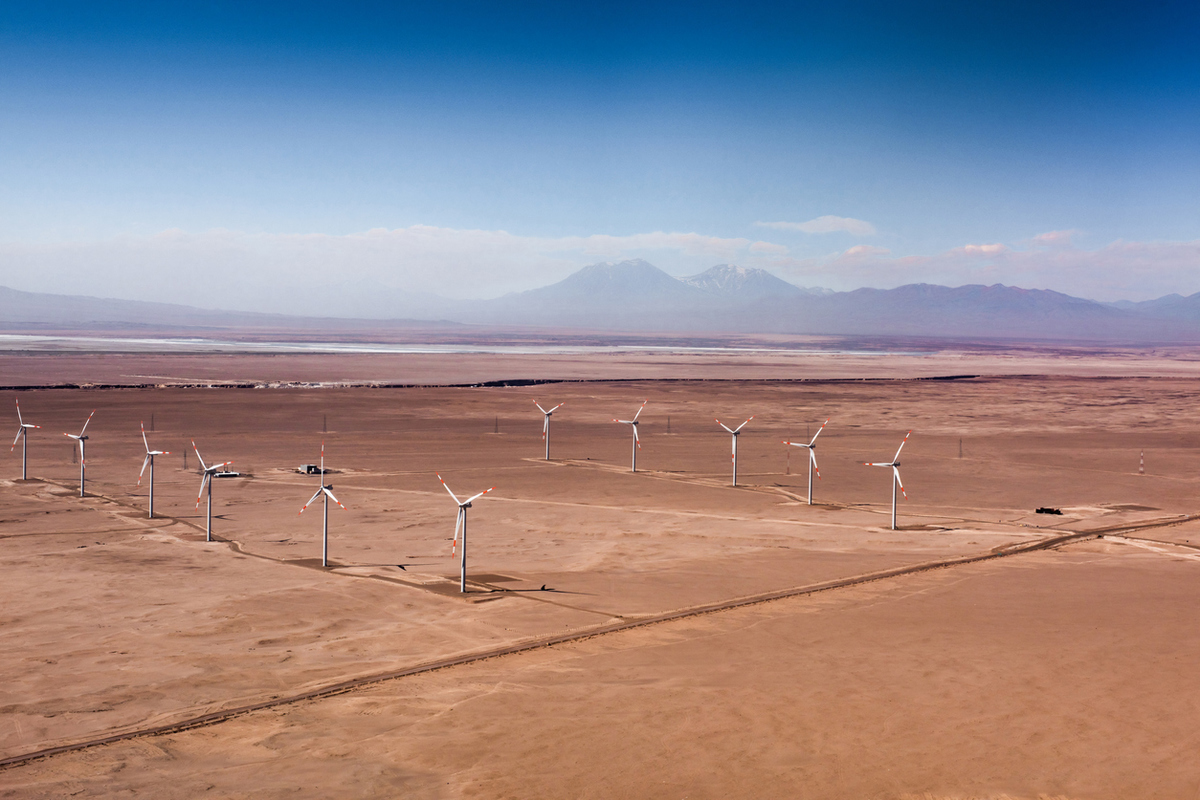Chile aims to build green hydrogen plants that would double the world's current capacity
The Chilean government's state corporation Corfo has signed agreements with an LNG regasification firm, an iron producer and an industrial gas supplier to develop industrial-scale green hydrogen plants across the country.

PHOTO: Wind power production in Calama in Chile's Antofagasta region. Getty Images
The three contracts are part of Corfo’s $1 billion programme to develop six green hydrogen production plants across the country.
The combined production capacity of all the six plants is projected to be 388 MW and they could produce 45,000 mt/year of green hydrogen. This would match the today's entire global production capacity for the renewable fuel grade, claims Corfo.
Only three of the six projects have been announced so far.
French industrial gas supplier Air Liquide is one of the contract winners and plans to build a plant to produce 60,000 mt/year of e-methanol from renewable energy, green hydrogen and captured carbon dioxide. The plant will have an 80 MW electrolyser and be located in Chile’s Antofagasta region.
GNL Quintero, which operates Chile's biggest LNG regasification terminal, will build a plant in the Valparaiso region with a 10 MW electrolyser to produce 500 mt/year of hydrogen.
Iron ore and steel producer CAP will set out to build a 12 MW capacity green hydrogen plant in the Biobio region, pegging its initial production capacity to 1,550 mt/year.
"These projects are the initial kick to accelerate the development of a green hydrogen industry in Chile, which is not only a great opportunity for economic development, but also a key piece to advance towards a fair energy transition,” said Corfo's executive vice president José Miguel Benavente.
Corfo expects to commission all of the projects by the end of 2025.
Earlier this month, the Port of Rotterdam said Chile could produce the world’s cheapest green hydrogen due to its abundant access to renewable energy. Rotterdam aims to to set up a green hydrogen corridor from Chile to Europe as it expects demand to pick up.





